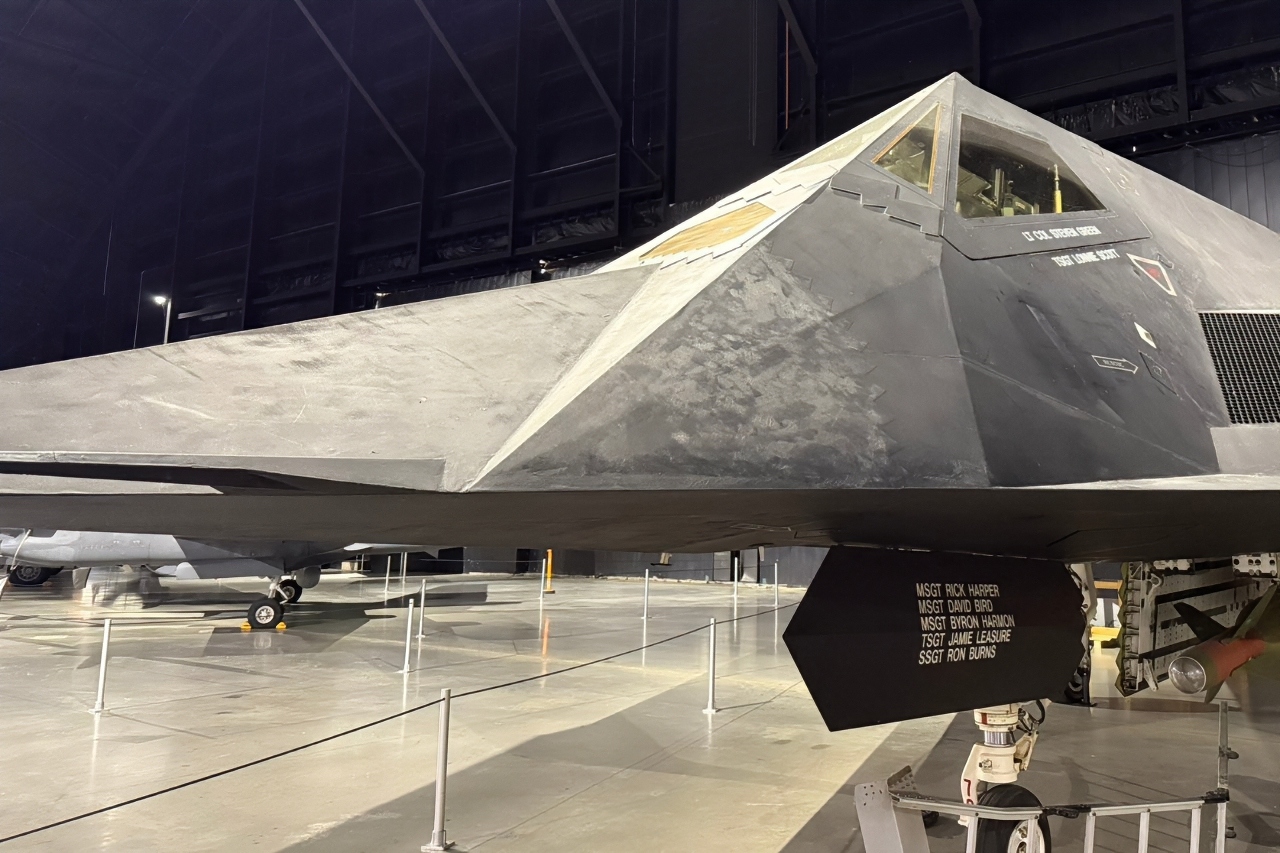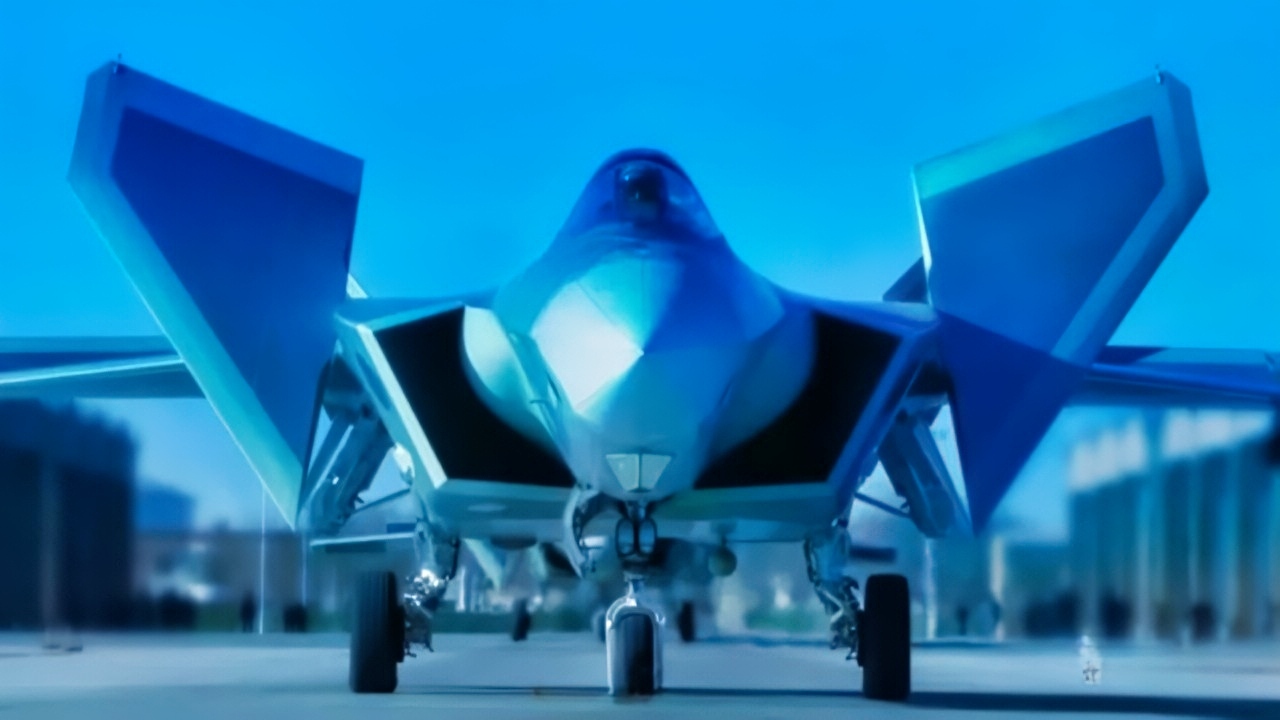Key Points and Summary – At the Changchun Air Show, China’s J-20 appeared on public static display for the first time, as AVIC’s Gong Feng described its aerodynamics as “unique in the world.”
-He cited a lifting-body configuration with canards, strake wings, and canted vertical tails that couple canard/strake/main-wing vortices for high lift and low drag, managed via relaxed-stability flight controls. Serrated edges on doors and bays aim to cut radar signature, with some aft features seen as interim.
-With 200+ produced since its 2011 first flight, the J-20 marks China’s first indigenous 5th-gen stealth fighter—though its real combat performance against U.S. low-RCS jets remains an open question.
Developer of J-20 Fighter Says Design “Unique in the World”
WARSAW, POLAND – One of the big “stars” of the 2025 Changchun Air Show in the Dongbei region’s Jilin province is the famous Chengdu J-20 fighter.
The aircraft is making its debut appearance at a public air show where it can be seen up close on a static display line – the first such instance since it first flew almost 15 years ago.
The state-run People’s Republic of China (PRC) daily paper, the Global Times, writes this week that the aircraft “captivated the audience with its highly ‘overwhelming’ aerodynamic appearance and exquisite craftsmanship, showcasing the beauty of China’s aviation industry.”
On Saturday this past weekend, Gong Feng, commented in the developments of the aircraft and its planform.
Gong is the chief technical expert of the Aviation Industry Corporation of China (AVIC) and deputy chief designer of the Chengdu Aircraft Design and Research Institute.
He elaborated on the details of what he calls the “unique aspects of the J-20’s aerodynamic design” in an interview with the paper and other media outlets.
Gong said that the J-20’s integrated aerodynamic design is appropriately described as a “lifting body configuration with canards, strake wings and vertical tails” and is itself an original design concept not utilized anywhere else in the world.
The J-20 aircraft first flew in January 2011, and there are estimated that today there are more than 200 of this model that have been produced at the Chengdu Aircraft Plant No. 132.
The aircraft is also rated by Gong and his colleagues as the PRC’s first “independently developed fifth-generation stealth fighter.”
Generational Leap for J-20
The J-20 design supposedly took shape only “after more than a decade of dedicated research and development on the concept.
It has filled the gap in China’s airborne stealth combat capabilities, breaking through a series of core key technologies such as high-stealth, high-performance platforms, and strong collaborative combat capabilities,” Gong explained. The J-20 “leads technological development, innovates research and development systems and builds exceptional teams. It is a landmark generational leap in aviation equipment for China’s new era and a powerful tool to safeguard the great rejuvenation of the Chinese nation,” Gong said.
He elaborated that as the PRC’s first stealth fighter, the J-20 incorporates numerous generational advancements in technology.
During its development, he also described the design team as having encountered numerous challenges, all of which he said were eventually resolved due to their technical expertise.
The attempts to lower the aircraft’s Radar Cross Section (RCS) can be seen in the design of J-20’s nose and the main undercarriage, the side weapon bay doors.
These all employ C-band through Ku-band frequencies serrated-edge design to optimize the lower signature.
This is a technique similar to what was used in the F-117A and F-22 configuration.

F-117 As Close As We Can Get. National Security Journal Original Photo.
The aft fuselage, tail booms, fins/strakes, and the axisymmetric engine nozzles are not consistent with lower RCS.
But one explanation that has been advanced in a long technical assessment of the aircraft is that these might be temporary solutions to expedite the flight testing of prototypes.
These shortcomings would be addressed later when the aircraft is in full-scale production.
Any “fixes” to these shortcomings would be implemented as retrofits into the older aircraft.
Overall, the J-20 airframe configuration and aft fuselage shape are from the same design techniques as the F-22A style 2-Dimensional Thrust Vector Control (TVC) nozzle design, or a non-TVC rectangular nozzle designed for controlled infrared emission patterns and radio-frequency stealth, reads that assessment. “Infrared signature would be influenced by other considerations, especially engine bypass ratio,” as it discusses details of the design in addition to RCS considerations.
Aerodynamic Characteristics
Gong further expanded on the aircraft’s aerodynamic design, stating the J-20 effectively utilizes the beneficial aerodynamic effects generated by mutual and synergistic coupling of the “canard vortex, strake wing vortex, and main wing vortex.”
In terms of the flight control characteristics, Gong stated that the J-20 exhibits relaxed longitudinal and directional instability technology.
This is programmed into the flight control computer to address the three-axis coupling effects caused by the vertical tail. This achieves a comprehensive design of “high stealth, high lift, low drag, and strong control.”
“During the period leading up to its [2011] maiden flight, ensuring a safe first flight was the top priority. Faced with such a futuristic, generational leap in aircraft design – a lifting body with strake wings, canards, and canted vertical tails – how could we ensure the pilot had sufficient confidence to take off and soar?” said Gong.
“To address this, we conducted extensive flight quality simulation tests, iron bird in-the-loop tests, and aircraft-in-the-loop tests with the first flight team pilots. Through repeated testing, optimization, and meticulous refinement, we not only successfully achieved the maiden flight but also endowed the J-20 with exceptional flight qualities,” Gong explained.

J-20 Fighter Ready. Image Credit: PLAAF.
The J-20 is, without a doubt, the first advanced fighter aircraft produced in the PRC that appears to show fluency with modern, low-observable, and high-performance aerodynamic properties.
It remains to be seen, however, how it will perform in combat against the low RCS models produced in the US.
About the Author: Reuben F. Johnson
Reuben F. Johnson has thirty-six years of experience analyzing and reporting on foreign weapons systems, defense technologies, and international arms export policy. Johnson is the Director of Research at the Casimir Pulaski Foundation. He is also a survivor of the Russian invasion of Ukraine in February 2022. He worked for years in the American defense industry as a foreign technology analyst and later as a consultant for the U.S. Department of Defense, the Departments of the Navy and Air Force, and the governments of the United Kingdom and Australia. In 2022-2023, he won two awards in a row for his defense reporting. He holds a bachelor’s degree from DePauw University and a master’s degree from Miami University in Ohio, specializing in Soviet and Russian studies. He lives in Warsaw.
More Military
The Sturgeon-Class Nuclear Attack Submarines Have a Message for the U.S. Navy
The USS Nautilus Nuclear Attack Submarine Has a Message for the U.S. Navy
The Forrestal-Class Aircraft Carriers Have a Message for the U.S. Navy
The Canada-F-35 Divorce Could Have Consequences
The B-58 Hustler Mach 2 Bomber: The Air Force’s Big Blunder?










